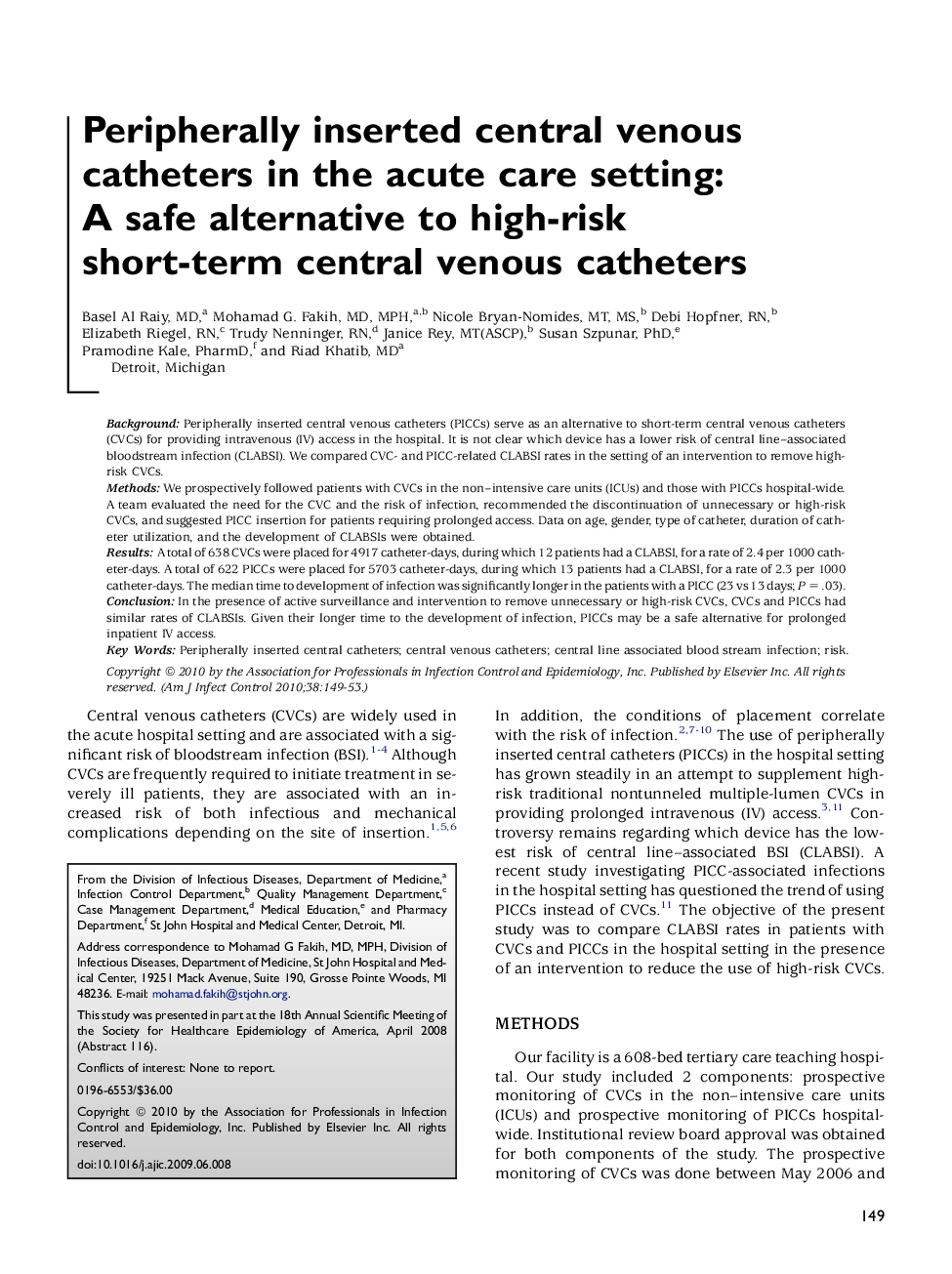| Article ID | Journal | Published Year | Pages | File Type |
|---|---|---|---|---|
| 2640454 | American Journal of Infection Control | 2010 | 5 Pages |
BackgroundPeripherally inserted central venous catheters (PICCs) serve as an alternative to short-term central venous catheters (CVCs) for providing intravenous (IV) access in the hospital. It is not clear which device has a lower risk of central line–associated bloodstream infection (CLABSI). We compared CVC- and PICC-related CLABSI rates in the setting of an intervention to remove high-risk CVCs.MethodsWe prospectively followed patients with CVCs in the non–intensive care units (ICUs) and those with PICCs hospital-wide. A team evaluated the need for the CVC and the risk of infection, recommended the discontinuation of unnecessary or high-risk CVCs, and suggested PICC insertion for patients requiring prolonged access. Data on age, gender, type of catheter, duration of catheter utilization, and the development of CLABSIs were obtained.ResultsA total of 638 CVCs were placed for 4917 catheter-days, during which 12 patients had a CLABSI, for a rate of 2.4 per 1000 catheter-days. A total of 622 PICCs were placed for 5703 catheter-days, during which 13 patients had a CLABSI, for a rate of 2.3 per 1000 catheter-days. The median time to development of infection was significantly longer in the patients with a PICC (23 vs 13 days; P = .03).ConclusionIn the presence of active surveillance and intervention to remove unnecessary or high-risk CVCs, CVCs and PICCs had similar rates of CLABSIs. Given their longer time to the development of infection, PICCs may be a safe alternative for prolonged inpatient IV access.
